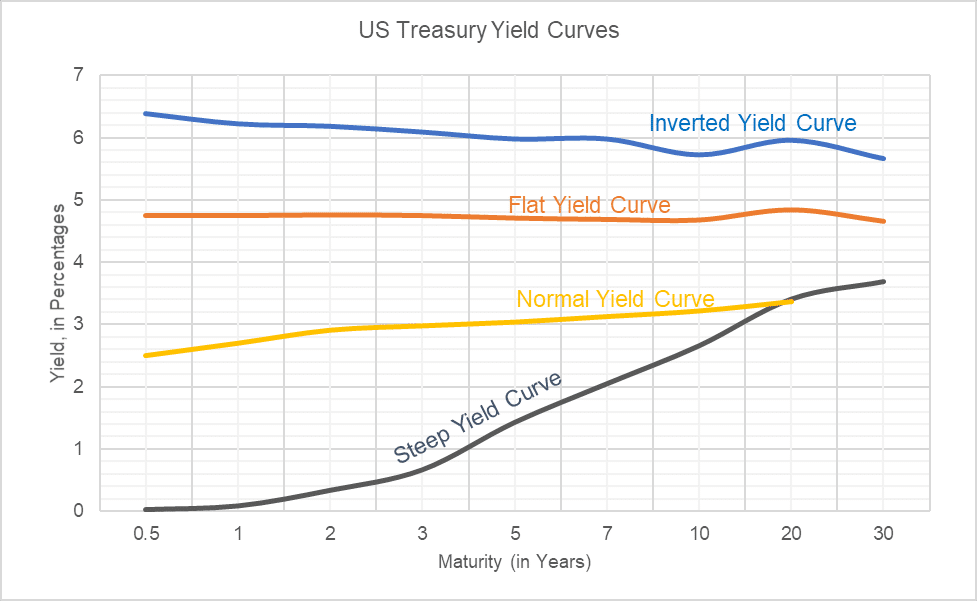When your employer provides you with equity as part of your remuneration package, you are receiving a portion of the company’s ownership. However, your stock must often vest first, which means you must typically work for the company for a period of time if you want to become an owner. This period of time is known as the vesting period. Here, we’ll define a vesting period and explain how vesting works for stocks, ESOP and 401(k) plans.
What Is A Vesting Period?
A vesting period is the amount of time an employee must work for an employer before he or she can acquire outright employee stock options, shares of company stock, or employer contributions to a tax-advantaged retirement plan. Vesting periods are available in a range of lengths. Government laws limit retirement payments, although share and option vesting durations are normally negotiated between the company and the employee.
The Fundamentals of Vesting Periods
Employers may provide employees with shares of company stock or stock options to purchase shares as part of their pay. This is an attempt to give employees a sense of ownership in the firm and to urge them to stay with the company rather than move on to another employer. Employees typically do not obtain full ownership of those shares immediately after beginning work. The vesting period is the amount of time that must elapse before they receive full ownership.
Vesting periods are also taken into account in retirement programs. Employees may not instantly possess employer contributions to these schemes. Instead, they will be acquired over a period of time. If an employee departs or is terminated before the vesting period, whether for options and grants or company retirement contributions, the employee generally loses the opportunity to own any benefits that have not been vested.
The details of how employee perks such as stock options and shares get vested are spelled out in the employment contract signed by the employee when he or she accepted the position. The vesting of retirement contributions will be outlined in the retirement plan summary, which can be obtained from the plan administrator or human resources department.
Employers must follow a number of criteria when it comes to vesting retirement plans. The Tax Reform Act of 1986 and Internal Revenue Service regulations specify the length of vesting periods that can be used. Depending on the kind of plan and the employer, vesting times can range from immediate to seven years.
Vesting Period Types
The simplest vesting term is immediate or zero; any issuance of shares or options or employer contributions to retirement plans are instantly owned by the employee. Within certain constraints, the employer has the authority to make vesting immediate. Certain types of retirement contributions must be promptly vested. For example, retirement plan contributions withheld voluntarily from an employee’s paycheck are always immediately 100% vested. Contributions made by employers to SEP IRA and IRA plans are likewise instantly vested.
Other types of eligible defined contribution retirement plans, such as profit-sharing and 401(k) plans, may or may not have instant vesting, but usually have a vesting time. There are two basic forms of vesting schedules for shares and options, as well as retirement contributions: cliff vesting and graded vesting.
Cliff Vesting
Cliff vesting means that after a certain period of time, the employee owns 100% of the benefits. This time span could be as little as a year or as long as many years. The IRS guidelines on retirement plans prohibit businesses from requiring employees to wait more than three years to obtain ownership of employer contributions to a plan. The rules for defined benefit plans, such as pension plans, are different. These can employ an immediate vesting schedule or a vesting time of up to seven years. It is up to the employer and employee to determine an acceptable vesting period when shares and options are not included as part of a retirement package. This could be for as little as a year or as long as several years.
Graded Vesting
Employees gain ownership in stages with graded vesting. The IRS requires that 20% of employer contributions vest after one year, 40% after three years, 60% after four years, 80% after five years, and 100% after six years of employment for defined contribution retirement plans. Employers can make benefits vest sooner, but they cannot make employees wait longer. The durations agreed upon by employer and employee for graded vesting of shares and options are frequently similar to retirement plan graded vesting schedules.
Stock Option Vesting Schedules
An employer can provide stock options to employees under a stock-option plan, which gives them the right to purchase company stock at a predetermined price independent of the stock’s current market value. The employee hopes that the stock’s market price will rise above the predetermined price before the option is exercised, allowing him or her the opportunity to profit.
Stock-option schemes typically have either a graded or a cliff vesting period. A cliff plan allows the employee to exercise all of his or her stock options on the same date. Employees under a graded plan are only authorized to exercise a portion of their options at a time. Each stock option may have a unique vesting period.
Employees who are awarded options on 100 shares with a five-year cliff vesting period, for example, must work for the company for another five years before exercising any of the options to buy shares. In a five-year graded plan, they may be eligible to purchase 20 shares per year until reaching 100 shares in the fifth year.
Because most stock options are not part of a retirement plan, their vesting schedules are not governed by the same federal standards that regulate matching contributions.
What does Vested Mean in the Context of a 401(k)?
Here’s a key notion for 401(k) plan participants to understand. While you always own the money you contribute from your own paycheck, you usually do not immediately own the employer’s matching contribution.
Vesting refers to the process by which your employer’s contributions legally become yours. A few firms provide instant vesting, which means you will always possess your whole 401(k) balance. However, this is not the norm; most 401(k) programs vest employer contributions over time.
Vesting schedules for 401(k) plans
Employees control 100% of their 401(k) funds at all times, including employer contributions. This, however, is not particularly prevalent. Most employers select one of the two alternative vesting options listed below.
Graded Vesting
A graded vesting schedule means that a particular percentage of your employer’s 401(k) contributions vest each year over a predetermined length of time until you are completely (100%) vested in your account.
If a company uses a graded vesting schedule, it must vest at least 20% of employer contributions after two years and another 20% yearly after that. A graded vesting plan can run up to six years, after which employees are fully vested.
Assume your employer follows the typical graded vesting schedule and, at the end of your third year, $10,000 of your 401(k) value can be ascribed to employer contributions. You would legally own $4,000 of this sum plus whatever share of your account came from your own discretionary contributions if you were 40% vested at this time.
Cliff Vesting
Your 401(k) will fully vest at a certain period under a cliff vesting schedule. It does not happen gradually, as with a graded vesting schedule; you will be exactly 0% vested one day and 100% the next.
If your company chooses to implement cliff vesting, the vesting period can last up to three years. If they do this, your 401(k) account will be completely vested on the third anniversary of your employment.
It’s crucial to remember that these examples indicate how long it can take for your employer contributions to the vest. Your employer may choose a vesting schedule that is faster than these, but not slower. The vesting schedule for your specific plan should be clearly stated in the paperwork provided by your company concerning its 401(k) plan.
Vesting of 401(k) plans following termination
If you quit your work before your 401(k) is fully vested, you will most likely lose the unvested portion of your account. After all, the money isn’t legally yours until you’ve worked long enough for your employer’s plan to satisfy the vesting schedule.
If you leave a job before you have fully vested, the unvested portion of your account is forfeited and placed in the employer’s forfeiture account, where it can be used to help pay plan administration expenses, reduce employer contributions, or be allocated as additional contributions to planning participants.
What Are The Benefits Of Vesting?
The benefits of vesting are as follows:
#1. Cash availability
Employees can receive stock options and equity as a type of compensation in addition to monetary bonuses and prizes. They allow the company to keep a larger portion of its cash on hand, which can be utilized to pay down present bills and in times of need.
#2. Reduced employee turnover
Companies can secure loyalty and long-term futures with some skilled employees by providing them with the incentive of stock options that are activated by time-based milestones.
Vesting Period In ESOP
In an ESOP, the vesting period is the initial period during which participants do not have access to all of the rights that would otherwise be attached to their options or shares.
Participants in an employee share or option program (or ‘ESOP’) receive shares or options in the company that employs them. These shares or options may be subject to a’vesting period’ at times.
The vesting period is the time between when the options or shares are issued and when the participant can exercise all of the rights that come with them.
When there is a vesting period, participants will not receive the benefit of all rights associated with their shares or options until the vesting term has expired.
Participants are not permitted to exercise an option under an ESOP until the vesting period has expired. If a participant quits the company during the vesting term, any unvested options will be forfeited or expire.
Similar principles would apply if the ESOP involved shares. If a participant leaves the company during the vesting term, any unvested shares are normally forfeited or sold at a loss (usually by way of buyback or sale to a third party for no consideration or at a discounted price). How long does an ESOP’s vesting period last?
The length of the vesting period will be determined by the scheme’s rules. There is no such thing as a “standard” vesting period. Depending on the form of the program, vesting periods range from 12 months to 3 years.
Is It Necessary To Have A Vesting Period?
Your ESOP is not required by law to have a vesting period. However, vesting periods are practically universal in option schemes. Most option plans are designed to ensure that members remain loyal to the company throughout the medium to long term. If participants receive the full value of their options from the start, the scheme is unlikely to provide any incentive for them to stay working.
The situation may be slightly different for share plans. This is due to the fact that the primary business goal can be delivered through a variety of techniques. For example, if an ESOP participant is awarded a share upfront, the scheme’s regulations would generally provide for the share to be forfeited or sold at a discount if the employee quits the company within a defined term. Even if it is expressed differently in the scheme regulations, this mechanism has the same practical impact as a vesting period.
The existence of a vesting time may also have implications for the scheme’s tax treatment. For example, if a participant’s interests are subject to a real risk of forfeiture (as in a vesting clause), this may allow the participant to postpone the date at which they are obligated to pay tax on any discount they obtain on their options or shares when they buy them.
Other Considerations for Vesting
The vesting schedule for shares and options may sometimes define a trigger event that will provide the employee with instant complete ownership of the benefits. In the case of a startup, the trigger may be an IPO or a sale to another company.
Retirement plans also include triggers. Plan cancellation is one of the triggers. When a retirement plan is dissolved, all contributions must be immediately 100% vested. A plan may be terminated if the company is sold to or merges with another firm, declares bankruptcy, or simply chooses to move to a different type of plan. Reaching retirement age is a trigger for retirement plan contributions. When an employee achieves full retirement age, his or her contributions to a retirement plan become completely vested.
What Does A Three Year Vesting Period Mean?
If an option has a 3-year vesting period, the recipient must wait 3 years to get his or her options, which may be cliff vesting or graded vesting.
What Does A 5 Year Vesting Mean?
A 5-year vesting period means that the recipient must wait 5 years to get his or her options. It also means that if you leave your employment within five years, you forfeit all pension benefits. However, if you quit after five years, you will receive 100% of your promised benefits.
What Happens After A Vesting Period?
After a vesting period, you will have earned the right to purchase all of the option shares at the pre-set exercise price after four years.
Can You Withdraw Your Vested Balance?
Yes. You can only withdraw or borrow against your 401(k) vested balance. You will not have access to the fraction that is not vested.
In Conclusion
Some firms provide advantages such as matching cash for their employees’ retirement plans. Workers then become fully vested, or own money given by their employer, either immediately or after several years of service. Federal and state rules control how long a firm can have you work before you are completely vested. In general, the maximum term ranges from two to seven years, depending on the kind of plan, vesting schedule, and other considerations.
Related Articles
- EQUITY COMPENSATION: Definition, Types and Examples
- Best Burial Insurance Companies of 2023: How They Work
- 401(a): Understanding What a 401(a) Plan Is With Ease
- 403(b) vs 401(k): Which Is The Better Plan? (+ Pros And Cons)
- WHAT IS PROFIT SHARING PLAN AND HOW DOES IT WORK?






